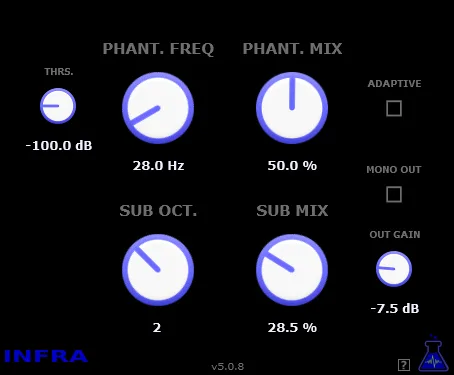MVerb: Open Source and Studio-Quality Reverb
Reverb is one of the most important effects in the world of sound recording and music production. It allows you to take the dry, unprocessed signal of an instrument or vocals beyond your studio and place it in a virtual acoustic space – from a cozy room to an infinite concert hall or a mysterious cave. High-quality reverb can add depth, dimension, atmosphere, and a sense of “presence” to any sound, making a mix lively and multifaceted. Without it, most modern music genres simply would not exist in their usual form.
Introduction to MVerb
Among the many reverb plugins on the market, MVerb from Martin Eastwood holds a special place. It is not just another audio processing tool, but a high-quality studio-grade plugin that is distributed with open source code. This solution was created not only as a full-fledged working tool for musicians and sound engineers, but also as a practical demonstration of the well-known “figure-of-eight” (eight) reverb structure by Dattorro.
Those dedicated to the topic of reverb synthesis are well acquainted with Dattorro’s work as one of the key figures in creating algorithms that mimic the natural propagation of sound in space. Using this architecture in MVerb means that the plugin is built on a solid academic and technical foundation, aimed at achieving the most natural and musical sound. This is not a case where “open source” means “compromise in quality”. On the contrary, MVerb proves that the principles of openness can go hand in hand with high standards of audio processing.
Why is MVerb worth your attention?
- Studio Sound Quality: Despite its open nature, MVerb offers reverb quality comparable to many commercial solutions. Its algorithms accurately reproduce complex early reflections and reverb tails, creating a realistic sense of space.
- Based on the Dattorro Algorithm: Using the industry-proven and respected “figure-of-eight” structure guarantees a predictable, controlled, and pleasing sound. This algorithm is known for its ability to create dense and rich reverb tails without unwanted artifacts.
- Open Source Code: This is not only an advantage for developers and enthusiasts who want to understand how the plugin works or even modify it. For the end user, this often means a high level of transparency and stability, as the plugin is developed and supported by the community.
- Simplicity and Efficiency: Although internally MVerb is a complex system, its interface is designed to be intuitive. It provides the user with the necessary set of parameters to fine-tune the reverb to the specific needs of the mix – from decay time and damping to room size and predelay.
- Versatility of Application: Thanks to its neutral, yet rich sound, MVerb is perfect for processing a wide range of instruments: from vocals and acoustic guitars, where naturalness is important, to synthesizers and percussion, where you can experiment with creating unique atmospheric effects.
Technical Details and Compatibility
MVerb is available in VST format, making it compatible with the vast majority of modern digital audio workstations (DAWs) on various operating systems.
- Format: VST
- Supported OS: Windows (Win32), macOS (OSX), Linux
This cross-platform capability is a significant advantage, allowing users regardless of their operating system to use this high-quality reverb.
Conclusion
MVerb from Martin Eastwood is a great example of how a technical demonstration can turn into a full-fledged, high-quality tool for music production. Offering studio-quality reverb based on the respected Dattorro algorithm, while being completely free and open source, MVerb is an extremely valuable addition to the arsenal of any musician, sound engineer, or producer who strives for professional sound without significant financial costs. Try MVerb, and you will discover all the beauty and depth of high-quality digital reverb.



